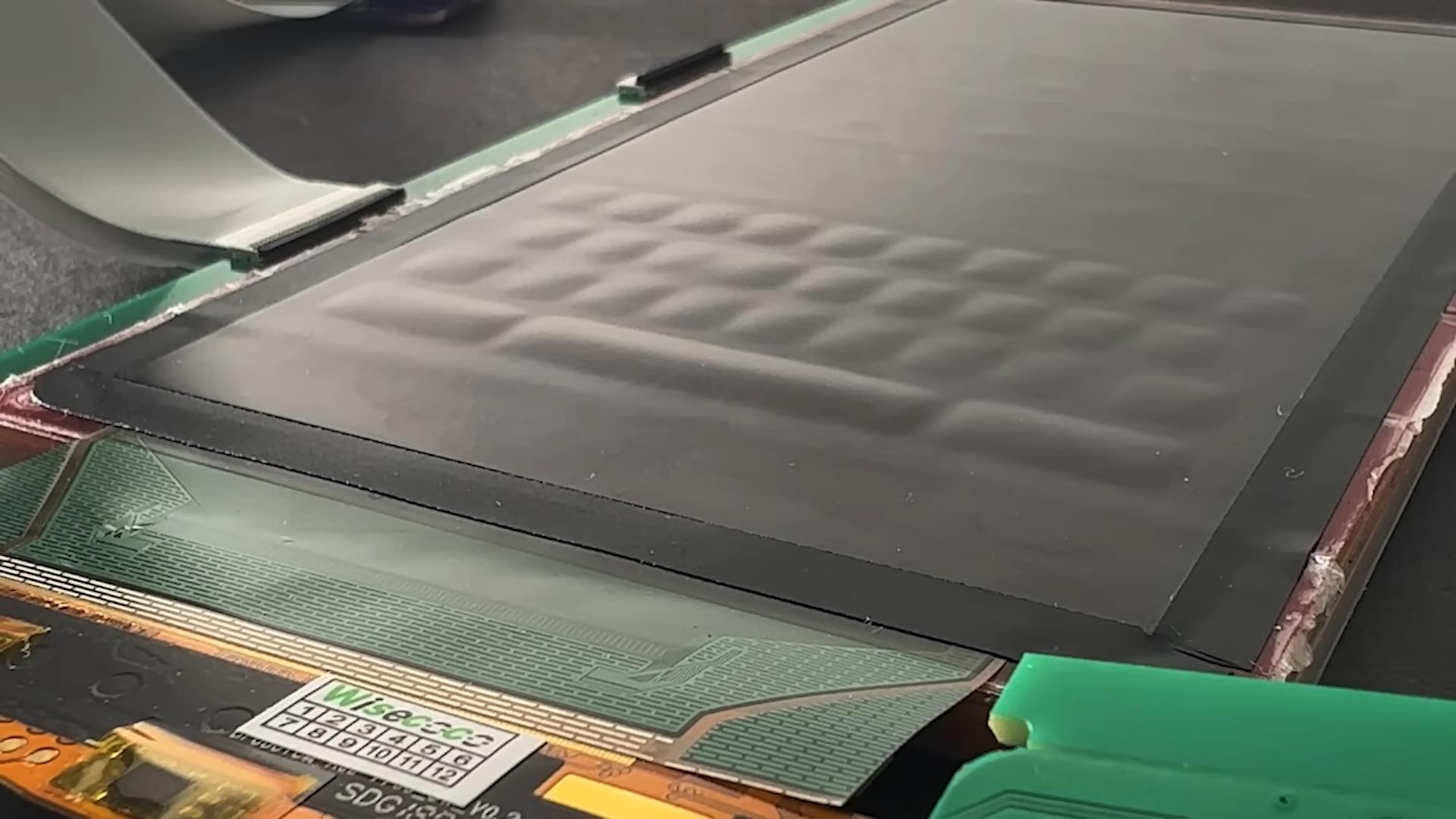
Would it be possible to have a physical keyboard on a smartphone while keeping the touchscreen intact? The Future Interfaces Group (FIG) from Carnegie Mellon University (CMU) seems to think so as the researchers recently demonstrated such a keyboard can exist via inflatable buttons on an OLED screen.
This type of technology is called Flat Panel Haptics and has been in the works at CMU for the past 15 years. The new breakthrough is that FIG has been able to develop a Flat Panel Haptics board five millimeters thick by developing an Embedded Electro-Osmotic Pump or EEOPs. According to the demo video, the EEOPs can manipulate a special pumping fluid by running an electrical current through it. The pumps sit between a reservoir of this fluid on the bottom and a flexible surface on top. Running electricity through the stack allows the pumps to inflate a rigid button on top up to five millimeters in height.
FIG published an accompanying paper explaining this tech in detail and revealing that the group used soft silicone as the top layer in the initial prototypes. While current AMOLED screens aren’t as flexible as that silicone, they're apparently flexible enough to accommodate transforming portions of the screen into a full-fledged QWERTY keyboard. The buttons “can reveal [themselves] when needed and sink back when [they’re] not.” FIG was also able to repurpose the EEOPs for other things like pumping an app icon in and out whenever you have pending notifications. Large buttons can be created, too, for the Snooze bar on alarms. They, too, can be animated or stay “inflated until pressed.”
Real-world applications
An inflatable keyboard isn't just cool, it could have real-world applications. First, it can help blind people use the best phones better as the keyboard can provide a physical indicator for on-screen content alongside help from AI assistants like Siri (although Siri is falling behind). Plus, the tactile feedback may lead to more immersive mobile gaming as players can receive physical feedback through the buttons. Digital controls don't hold a candle to something physical, speaking from experience.
But will phone companies be interested in inflatable buttons? It's hard to say. All the way back in 2008, there was the BlackBerry Storm which had its touchscreen double as a physical button. This feature was widely panned in initial reviews as it made writing texts way more difficult than it needed to be. Since then, phone manufacturers have avoided like the plague physical buttons on touchscreens, but FIG’s Flat Panel Haptics could change that attitude. Devices would have a full keyboard instead of one big button.
There’s still plenty of work to do for FIG as you can imagine. In the paper, the researchers recognize several limitations like the shaky durability of these buttons and how much power it would take to run everything. Plus, it would make phones more bulky so perhaps tablets are a better fit. We'll just have to wait and see.
Speaking of tablets, check out TechRadar’s latest roundup of the best iPad deals for April 2023.







